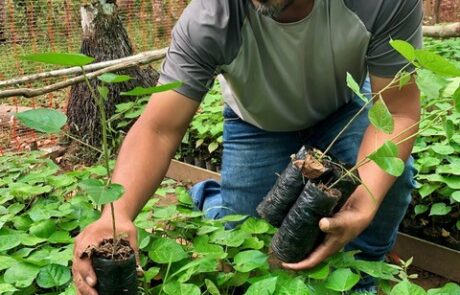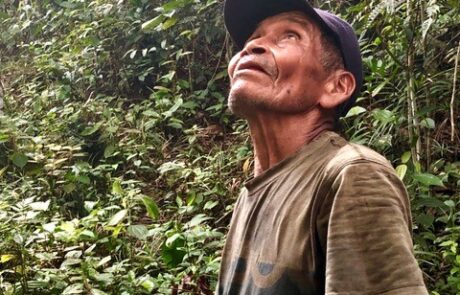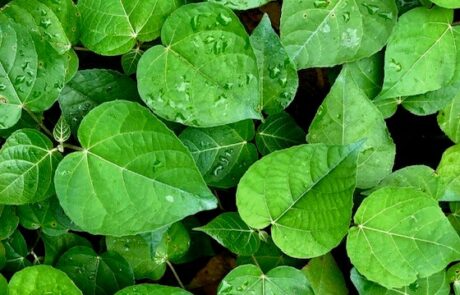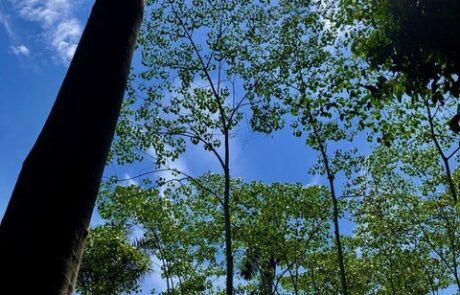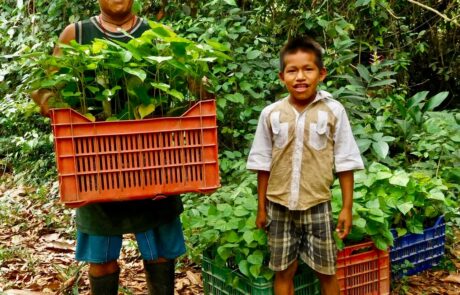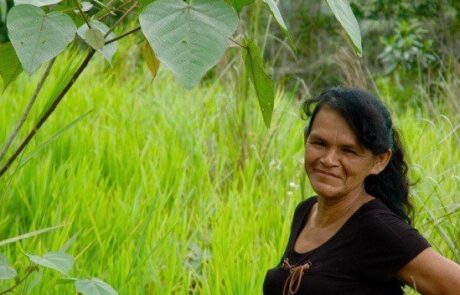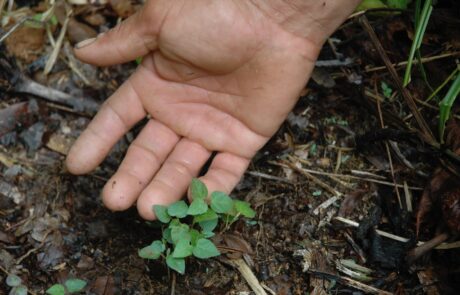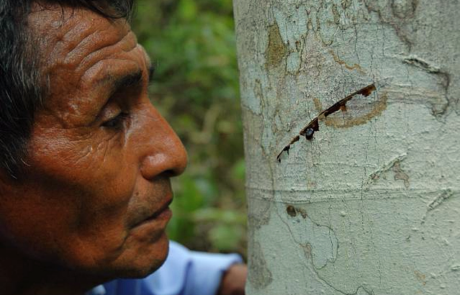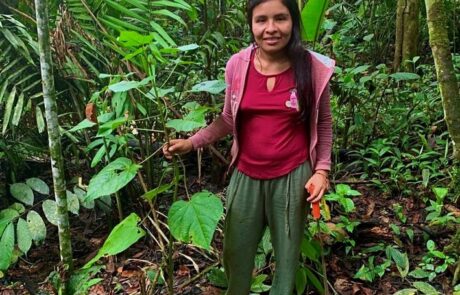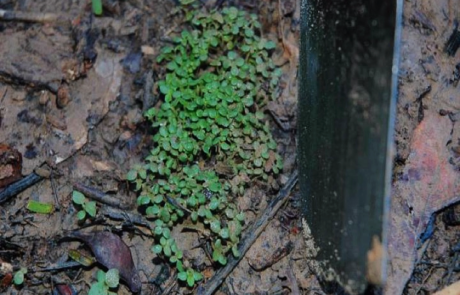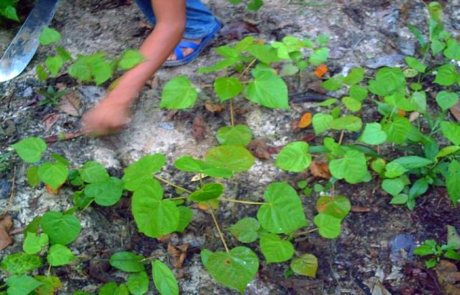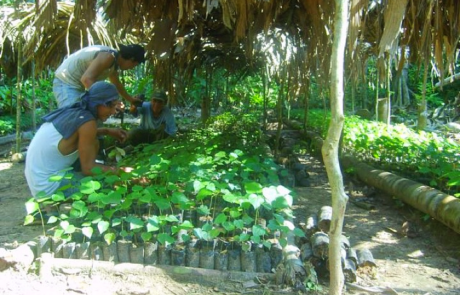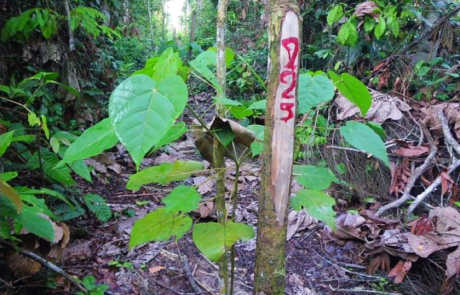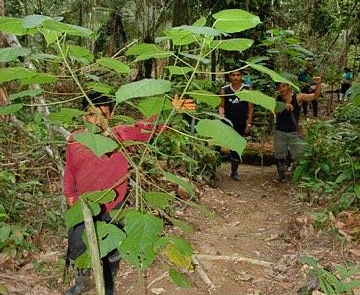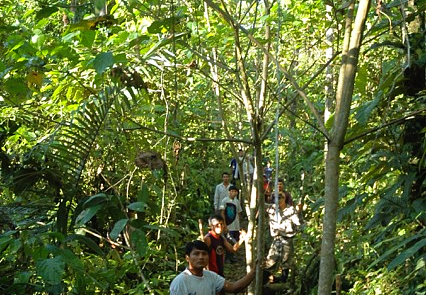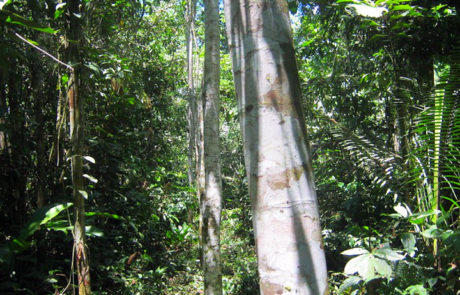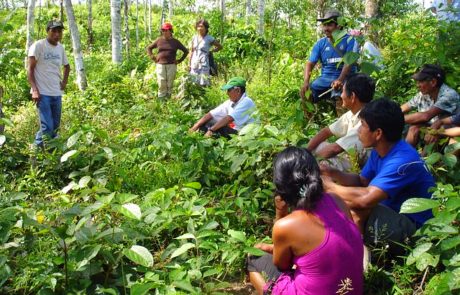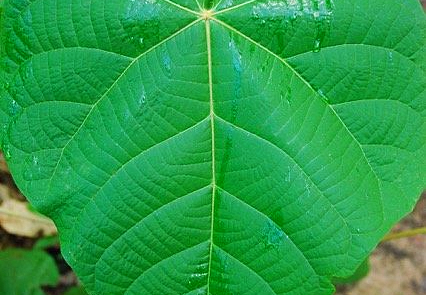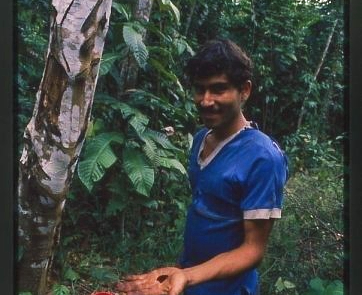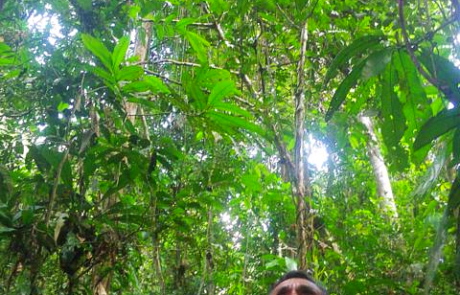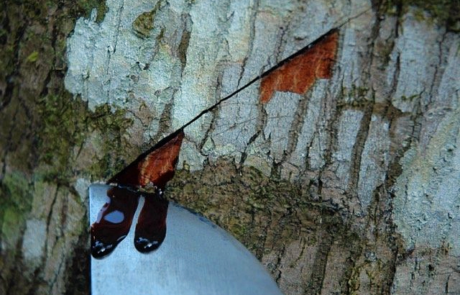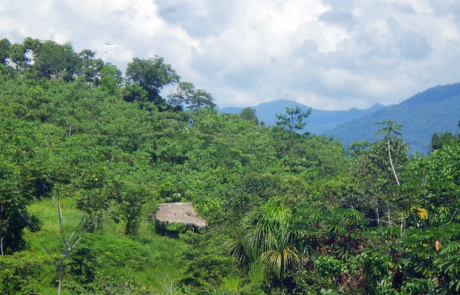Corporate Responsibility
Corporate
Responsibility
We are committed to identifying opportunities to develop and commercialize first-in-class, plant-based prescription medicines that leverage our broad intellectual property portfolio, deep pipeline, and extensive botanical library—to address unmet medical needs for people around the globe.
We are committed to identifying opportunities to develop and commercialize first-in-class, plant-based prescription medicines that leverage our broad intellectual property portfolio, deep pipeline, and extensive botanical library—to address unmet medical needs for people around the globe.
Sustainability and Community Benefit Sharing
Our leading drug compound, crofelemer, is extracted and purified from sangre de drago, or dragon’s blood, the bark sap of the Croton lechleri tree. Croton lechleri is an abundant, fast-growing Amazonian pioneer tree species that is widespread in South America.
The bark sap is sustainably harvested using fair trade practices by local peoples with whom our team has been collaborating for over two decades. Since 2001, more than 800,000 Croton lechleri trees have been planted.
Sustainability and Community Benefit Sharing
Our leading drug compound, crofelemer, is extracted and purified from sangre de drago, or dragon’s blood, the bark sap of the Croton lechleri tree. Croton lechleri is an abundant, fast-growing Amazonian pioneer tree species that is widespread in South America.
The bark sap is sustainably harvested using fair trade practices by local peoples with whom our team has been collaborating for over two decades. Since 2001, more than 800,000 Croton lechleri trees have been planted.
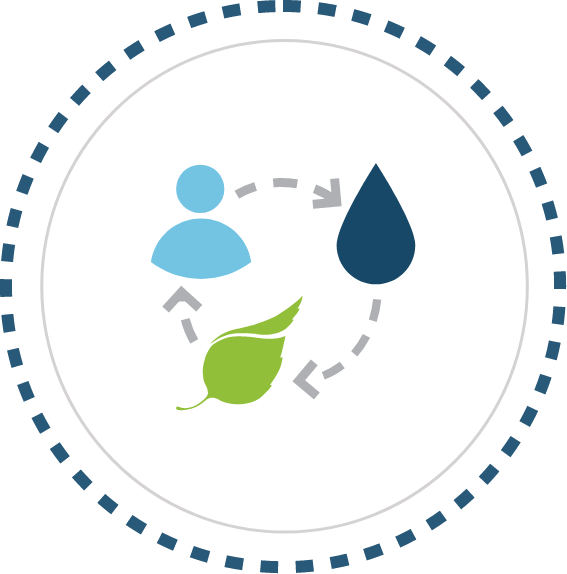
Our Partners in the Rainforest
Our Partners in the Rainforest
Jaguar Health’s team has practiced fair trade with its local and Indigenous partners for more than two decades, providing income-generating opportunities for individuals, communities, and families

Alternative Rural Education Center in Llachapa, Peru
Students and staff of the Alternative Rural Education Center (CRFA) in the community of Llachapa on the Napo River in Peru, gathering to celebrate and express gratitude to Napo Pharmaceuticals for the donation of 27 hectares of secondary rainforest land adjacent to their school. The school’s main objective is to provide integrated and applied educational opportunities for students in rural areas of Peru, and the students come from 20 Indigenous and local communities in the Napo River area.
The students will carry out various agricultural, aquaculture, and forestry research projects and create regionally adapted business plans as part of their educational training, utilizing the land which they had requested from Napo Pharmaceuticals for this purpose. Napo Pharmaceuticals is pleased, proud, and honored to be able to support the families and community of Llachapa who have collaborated with our team in the sustainable harvest and management of Croton lechleri since 1992.
Other Napo Pharmaceuticals activities in support of local communities:
 Financial support for land demarcation in Peru at the request of Indigenous community
Financial support for land demarcation in Peru at the request of Indigenous community
 Provision of pipes to transport clean water to several different Indigenous communities
Provision of pipes to transport clean water to several different Indigenous communities
 Provision of emergency medical transport boat and motor to take injured people to regional medical hospital
Provision of emergency medical transport boat and motor to take injured people to regional medical hospital
 Provision of malaria bed nets, beds, and other provisions to a very simple maternity center serving local communities
Provision of malaria bed nets, beds, and other provisions to a very simple maternity center serving local communities
 Provision of medical supplies and sending volunteer dentist to remote community upon their request
Provision of medical supplies and sending volunteer dentist to remote community upon their request
 Provision of pumps and related equipment to complete a clean water-pumping system
Provision of pumps and related equipment to complete a clean water-pumping system
Jaguar Health’s team has practiced fair trade with its local and Indigenous partners for more than two decades, providing income-generating opportunities for individuals, communities, and families

Alternative Rural Education Center in Llachapa, Peru
Students and staff of the Alternative Rural Education Center (CRFA) in the community of Llachapa on the Napo River in Peru, gathering to celebrate and express gratitude to Napo Pharmaceuticals for the donation of 27 hectares of secondary rainforest land adjacent to their school. The school’s main objective is to provide integrated and applied educational opportunities for students in rural areas of Peru, and the students come from 20 Indigenous and local communities in the Napo River area.
The students will carry out various agricultural, aquaculture, and forestry research projects and create regionally adapted business plans as part of their educational training, utilizing the land which they had requested from Napo Pharmaceuticals for this purpose. Napo Pharmaceuticals is pleased, proud, and honored to be able to support the families and community of Llachapa who have collaborated with our team in the sustainable harvest and management of Croton lechleri since 1992.
Other Napo Pharmaceuticals activities in support of local communities:
 Financial support for land demarcation in Peru at the request of Indigenous community
Financial support for land demarcation in Peru at the request of Indigenous community
 Provision of pipes to transport clean water to several different Indigenous communities
Provision of pipes to transport clean water to several different Indigenous communities
 Provision of emergency medical transport boat and motor to take injured people to regional medical hospital
Provision of emergency medical transport boat and motor to take injured people to regional medical hospital
 Provision of malaria bed nets, beds, and other provisions to a very simple maternity center serving local communities
Provision of malaria bed nets, beds, and other provisions to a very simple maternity center serving local communities
 Provision of medical supplies and sending volunteer dentist to remote community upon their request
Provision of medical supplies and sending volunteer dentist to remote community upon their request
 Provision of pumps and related equipment to complete a clean water-pumping system
Provision of pumps and related equipment to complete a clean water-pumping system
Napo Pharmaceuticals Receives 2019 Varro E. Tyler Commercial Investment in Phytomedicinal Research Award
The nonprofit American Botanical Council (ABC) has given the 2019 Varro E. Tyler Commercial Investment in Phytomedicinal Research Award to Jaguar’s wholly owned subsidiary Napo Pharmaceuticals in recognition of Napo’s ongoing commitment to the sustainable development and production of natural therapeutic preparations. Specifically, this award acknowledges the successful development and approval of crofelemer, which is derived from the medicinal Croton lechleri tree in the Amazon Rainforest. The ABC Tyler Award was created to honor one of the most respected US scientists in late–20th century herbal medicine and pharmacognosy (the science that studies drugs of natural origin, usually from plants).
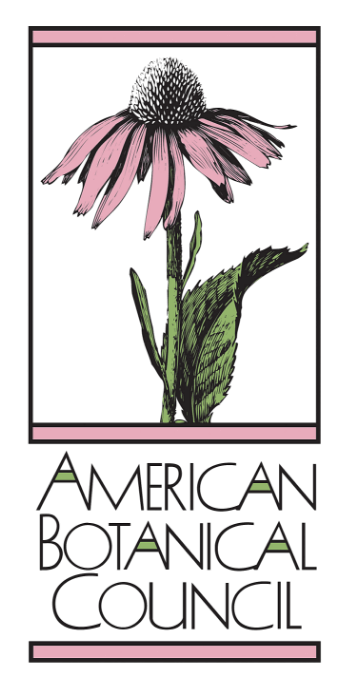
Napo Pharmaceuticals Receives 2019 Varro E. Tyler Commercial Investment in Phytomedicinal Research Award
The nonprofit American Botanical Council (ABC) has given the 2019 Varro E. Tyler Commercial Investment in Phytomedicinal Research Award to Jaguar’s wholly owned subsidiary Napo Pharmaceuticals in recognition of Napo’s ongoing commitment to the sustainable development and production of natural therapeutic preparations. Specifically, this award acknowledges the successful development and approval of crofelemer, which is derived from the medicinal Croton lechleri tree in the Amazon Rainforest. The ABC Tyler Award was created to honor one of the most respected US scientists in late–20th century herbal medicine and pharmacognosy (the science that studies drugs of natural origin, usually from plants).

Articles, Podcasts, and Other Content Related to Traditional Medicine, Public Health, the Sustainable Harvest, and Replanting of the Croton lechleri Tree, and the Development of Crofelemer:
At Jaguar, Napo Pharmaceuticals, and Napo Therapeutics, we recognize the unique and powerful knowledge traditional peoples have about plants, ecosystems, inter-relationships, and healing compounds. This knowledge has led to drug products that have changed the world, such as quinine did for malaria. Links to learn more:

Articles, Podcasts, and Other Content Related to Traditional Medicine, Public Health, the Sustainable Harvest, and Replanting of the Croton lechleri Tree, and the Development of Crofelemer:
At Jaguar, Napo Pharmaceuticals, and Napo Therapeutics, we recognize the unique and powerful knowledge traditional peoples have about plants, ecosystems, inter-relationships, and healing compounds. This knowledge has led to drug products that have changed the world, such as quinine did for malaria. Links to learn more:
Healing Forest Conservancy
The Healing Forest Conservancy (HFC) is an independent nonprofit foundation established in 1990 to specifically develop and implement a process to return benefits from product profits to collaborating countries and cultural groups after a product is commercialized, and for as long as Napo Pharmaceuticals has a profit. These long-term benefits will be a percentage of all Napo Pharmaceuticals’ product-related profits.
The mission of the HFC is to promote the conservation of the biological diversity of tropical forests, particularly medicinal plants, and the survival of the cultural diversity of tropical forest peoples, particularly their traditional knowledge of medicinal plants. The Conservancy will distribute these long-term benefits equally to all the countries and cultures that are Napo Pharmaceuticals collaborators worldwide, regardless of where the plant sample or traditional knowledge originated. Trust funds are the financial mechanisms through which long-term revenues will be disbursed to the participating communities, regardless of the origin of the product.

Healing Forest Conservancy
The Healing Forest Conservancy (HFC) is an independent nonprofit foundation established in 1990 to specifically develop and implement a process to return benefits from product profits to collaborating countries and cultural groups after a product is commercialized, and for as long as Napo Pharmaceuticals has a profit. These long-term benefits will be a percentage of all Napo Pharmaceuticals’ product-related profits.
The mission of the HFC is to promote the conservation of the biological diversity of tropical forests, particularly medicinal plants, and the survival of the cultural diversity of tropical forest peoples, particularly their traditional knowledge of medicinal plants. The Conservancy will distribute these long-term benefits equally to all the countries and cultures that are Napo Pharmaceuticals collaborators worldwide, regardless of where the plant sample or traditional knowledge originated. Trust funds are the financial mechanisms through which long-term revenues will be disbursed to the participating communities, regardless of the origin of the product.
Crofelemer’s Ethnobotanical Origins
The term ethnobotanical refers to the use of plants by Indigenous people in the course of their everyday lives, including the use of plants for medicine. Crofelemer, the active pharmaceutical ingredient in Mytesi®, is derived from the Amazonian tree species, Croton lechleri, and has a rich history of medicinal use by Indigenous peoples in the Western Amazon rainforests of South America. The tree produces a blood-red latex from which crofelemer is isolated and purified. The tree is commonly called “sangre de drago” in Spanish, which translates to “dragon’s blood” in English.
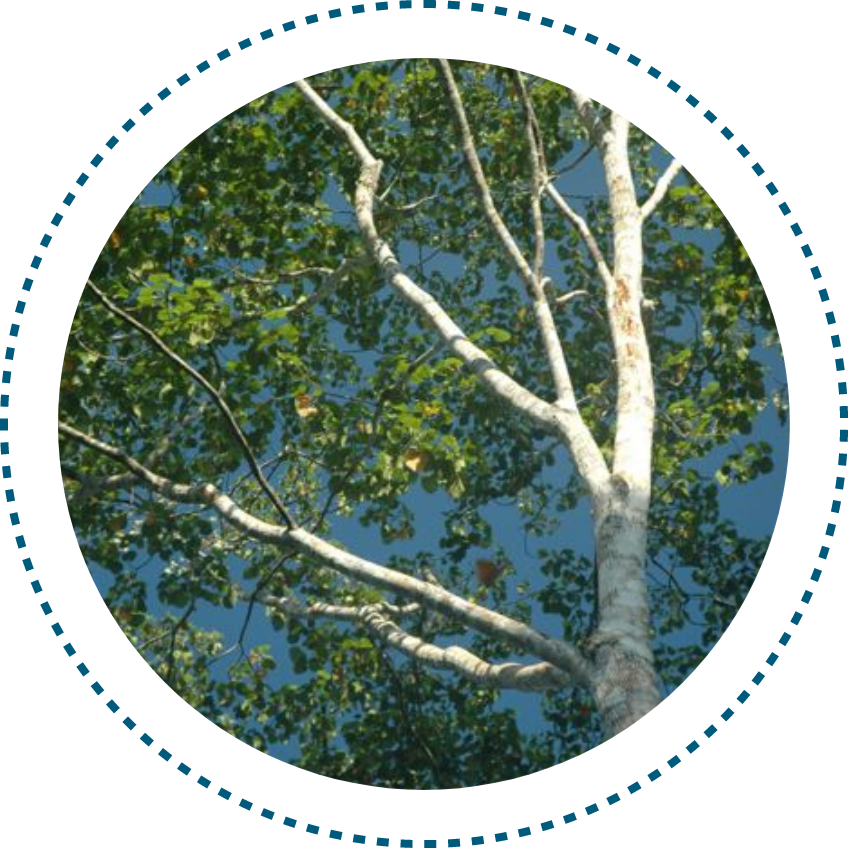
Croton lechleri tree
The Croton lechleri tree is one of the most widely used plant-derived medicines in the western hemisphere. Red latex from Croton lechleri trees continues to be part of rural and urban traditional medicine in multiple countries, including Peru, Colombia, Ecuador, and Bolivia.
Indigenous people utilize the red latex to treat a variety of medical conditions. Its most common uses are taking small quantities of the latex orally to treat diarrhea, stomach ulcers, coughs, and flu. The red latex is also applied topically as a wound-healing agent for cuts and open sores, and for healing the gums after tooth extractions. It has been and continues to be used to treat humans as well as dogs and livestock.
Because of its widespread medicinal use, there has been extensive research conducted on the chemistry and pharmacology of this red latex. Mytesi is the result of decades of research that began with the expertise of traditional healers of the Amazon Rainforest.
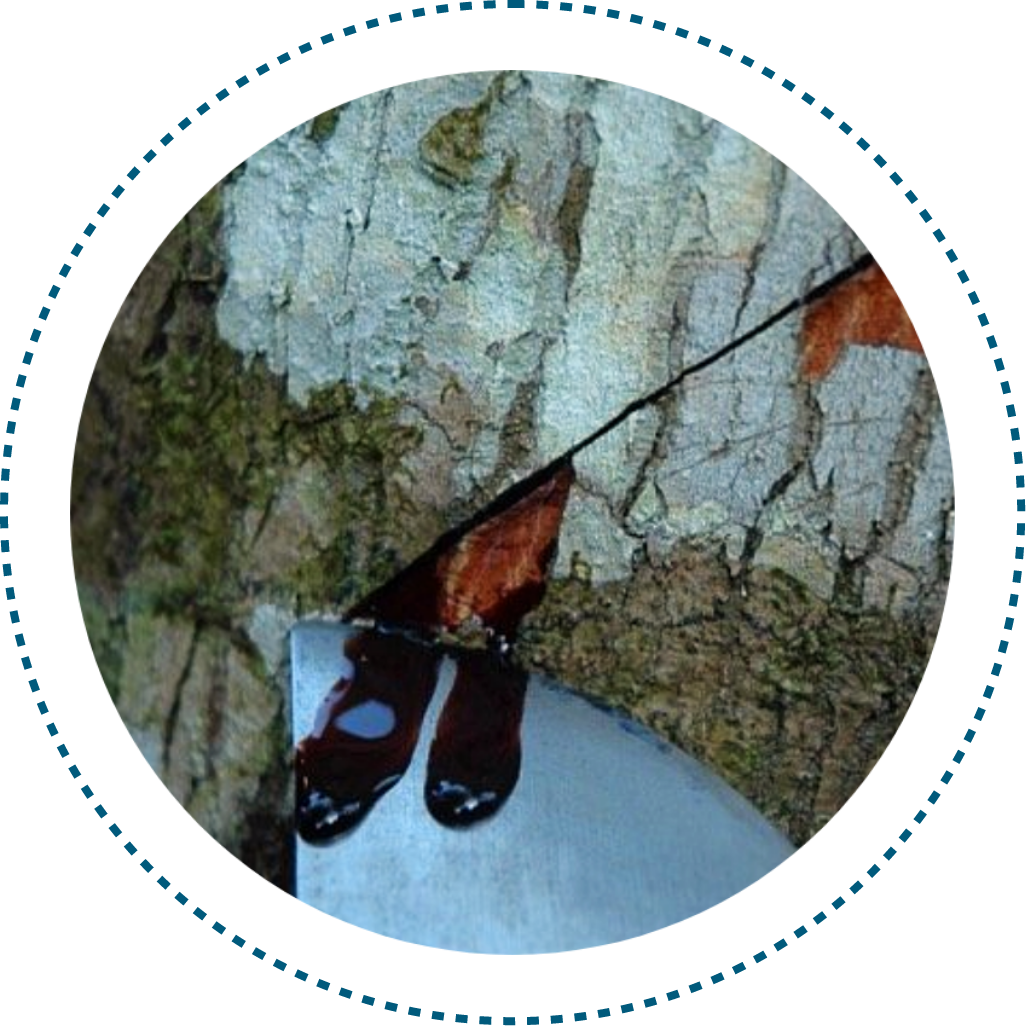
Crofelemer is extracted and purified from the red latex of Croton lechleri, shown here as it exudes from the cut bark of the tree
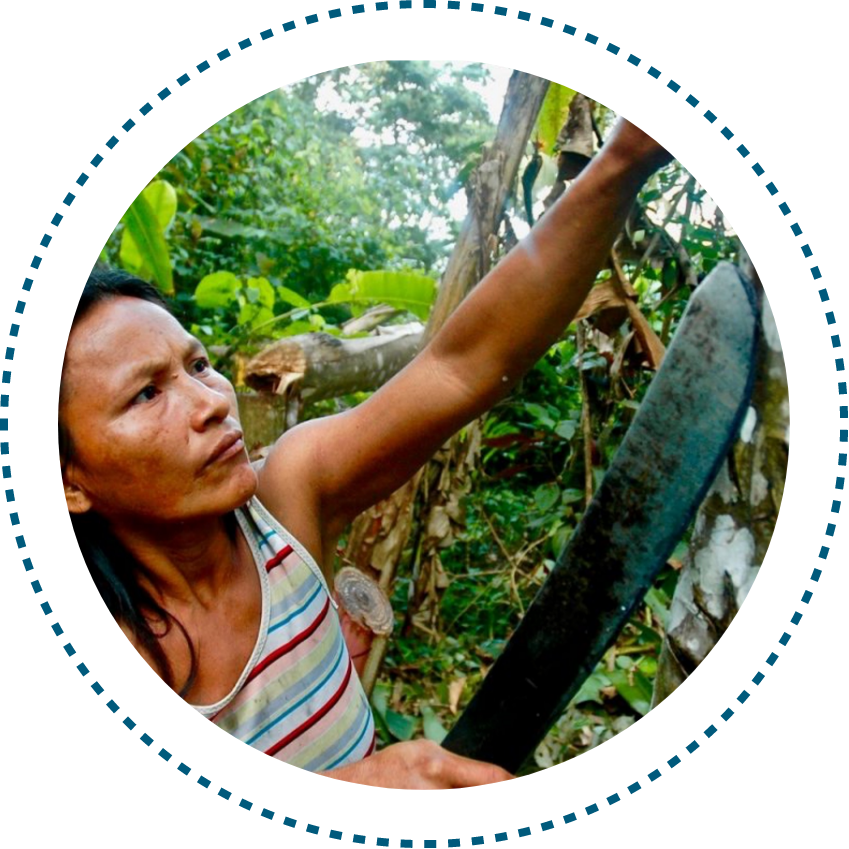
Maria Davila Lopez, an Awajun Indigenous mother, collecting latex from a Croton lechleri tree that she planted in her agroforestry “living pharmacy” next to her house, to treat a wound on her son’s head
The Croton lechleri tree is rapidly growing and abundant in multiple countries. Jaguar and its predecessor companies always focus on the long-term sustainable management of the tree as part of our commitment to helping local communities conserve their natural resources while also earning income for the basic needs of their families, such as food, clothing, health care, and education. Jaguar employees have been collaborating with local communities, business partners, and scientists for the past 30 years to make certain that the development and sale of this product provides benefit to local communities. Large numbers of these trees have been planted, and replanted upon harvesting, across Peru in collaboration with communities and small local businesses.
Crofelemer’s Ethnobotanical Origins
The term ethnobotanical refers to the use of plants by Indigenous people in the course of their everyday lives, including the use of plants for medicine. Crofelemer, the active pharmaceutical ingredient in Mytesi®, is derived from the Amazonian tree species, Croton lechleri, and has a rich history of medicinal use by Indigenous peoples in the Western Amazon rainforests of South America. The tree produces a blood-red latex from which crofelemer is isolated and purified. The tree is commonly called “sangre de drago” in Spanish, which translates to “dragon’s blood” in English.

Croton lechleri tree
The Croton lechleri tree is one of the most widely used plant-derived medicines in the western hemisphere. Red latex from Croton lechleri trees continues to be part of rural and urban traditional medicine in multiple countries, including Peru, Colombia, Ecuador, and Bolivia.
Indigenous people utilize the red latex to treat a variety of medical conditions. Its most common uses are taking small quantities of the latex orally to treat diarrhea, stomach ulcers, coughs, and flu. The red latex is also applied topically as a wound-healing agent for cuts and open sores, and for healing the gums after tooth extractions. It has been and continues to be used to treat humans as well as dogs and livestock.
Because of its widespread medicinal use, there has been extensive research conducted on the chemistry and pharmacology of this red latex. Mytesi is the result of decades of research that began with the expertise of traditional healers of the Amazon Rainforest.

Crofelemer is extracted and purified from the red latex of Croton lechleri, shown here as it exudes from the cut bark of the tree

Maria Davila Lopez, an Awajun Indigenous mother, collecting latex from a Croton lechleri tree that she planted in her agroforestry “living pharmacy” next to her house, to treat a wound on her son’s head
The Croton lechleri tree is rapidly growing and abundant in multiple countries. Jaguar and its predecessor companies always focus on the long-term sustainable management of the tree as part of our commitment to helping local communities conserve their natural resources while also earning income for the basic needs of their families, such as food, clothing, health care, and education. Jaguar employees have been collaborating with local communities, business partners, and scientists for the past 30 years to make certain that the development and sale of this product provides benefit to local communities. Large numbers of these trees have been planted, and replanted upon harvesting, across Peru in collaboration with communities and small local businesses.


